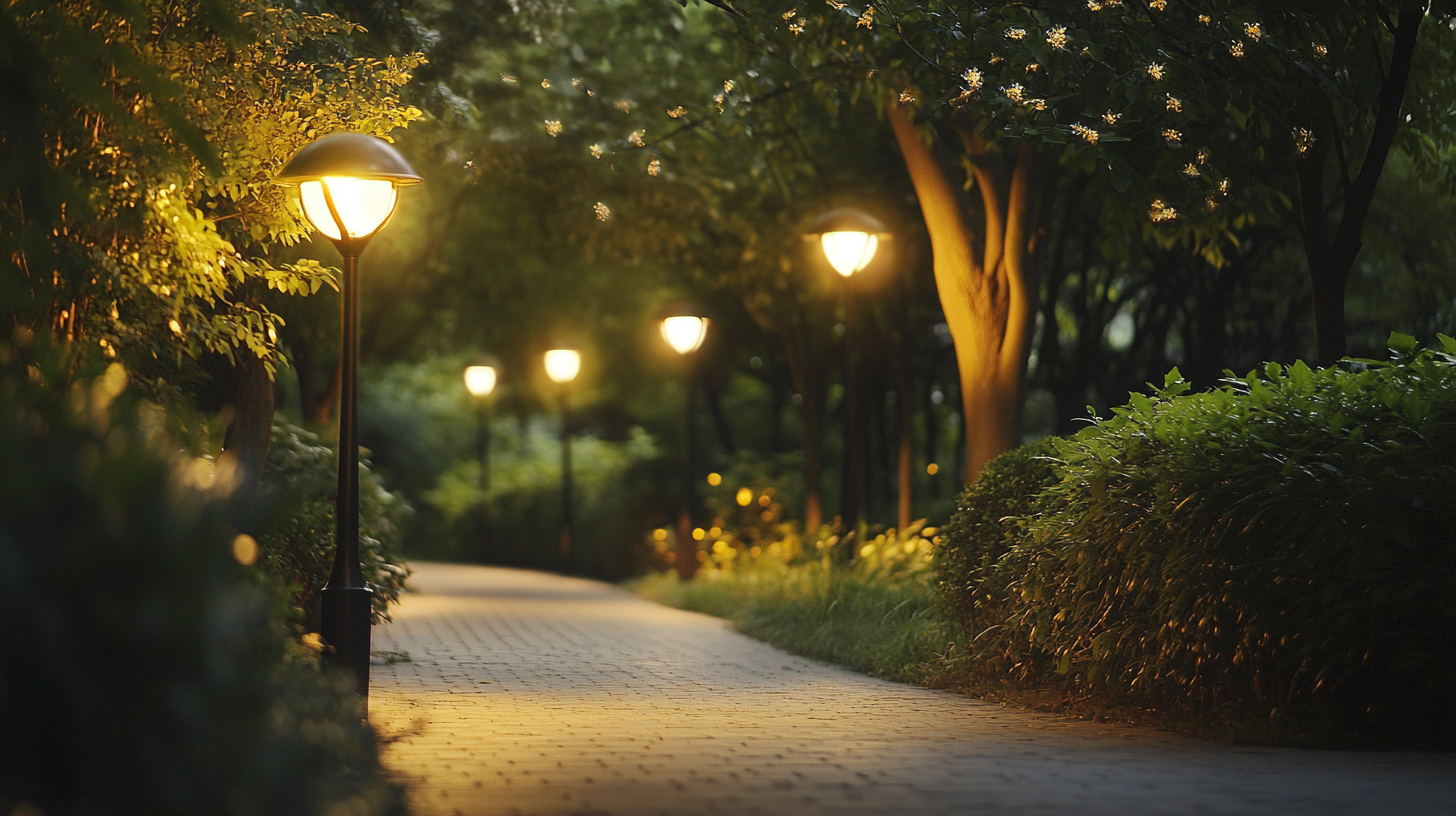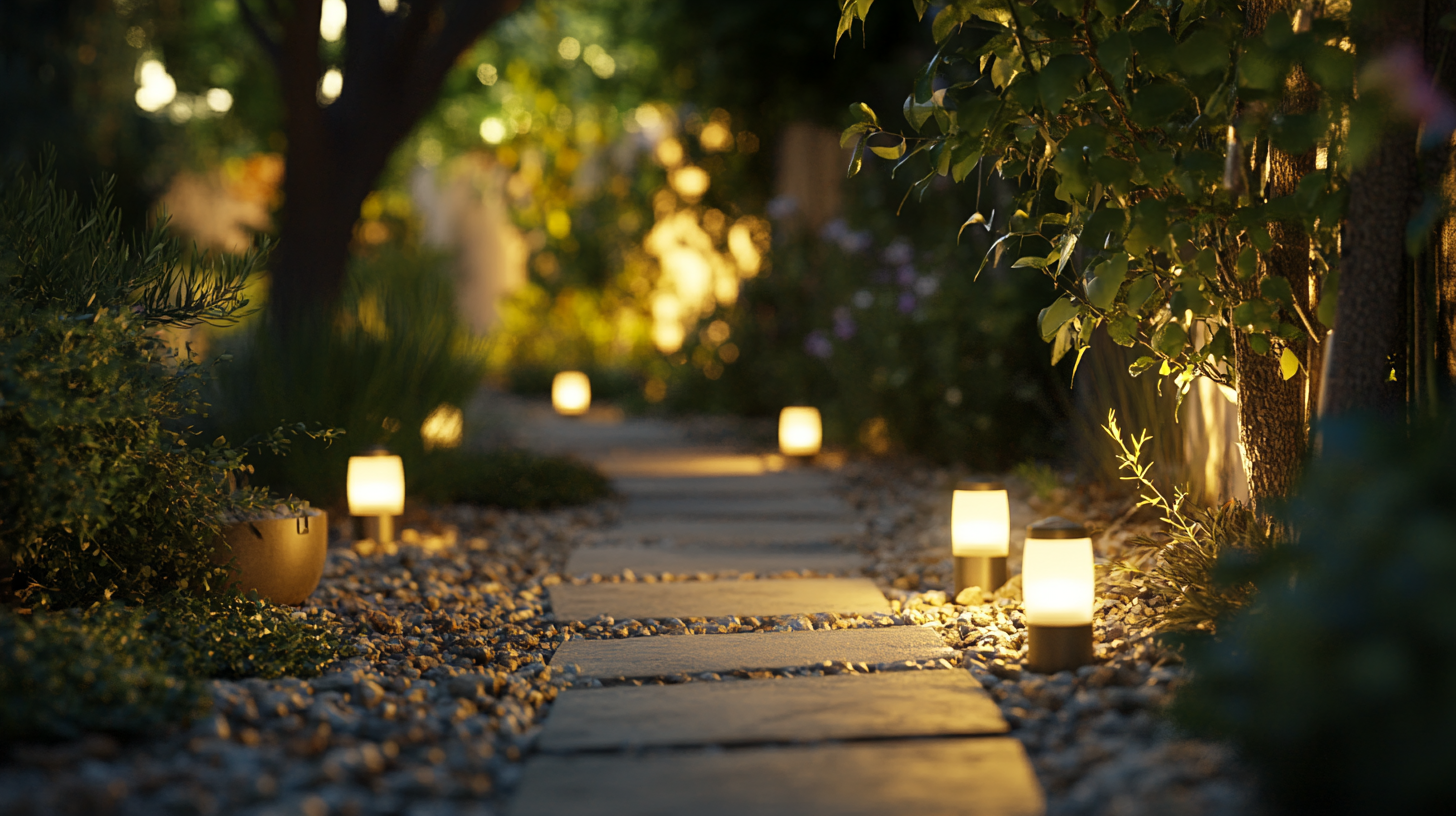Unlocking the Benefits of Path Lighting: Essential Tips for Global Buyers
In today's rapidly evolving outdoor design landscape, path lighting has emerged as an essential element for both aesthetics and safety. As global buyers seek to create inviting and secure environments, understanding the myriad benefits of path lighting is crucial. Whether it’s enhancing the beauty of a garden, illuminating walkways, or ensuring safe passage at night, path lighting serves multiple purposes that go beyond mere functionality. With a plethora of options available in the market, making informed decisions becomes imperative for achieving the desired ambiance and practicality.
This blog aims to unlock the benefits of path lighting by offering essential tips for buyers worldwide. We will explore key considerations such as style, energy efficiency, and durability that can influence your choice of lighting fixtures. Additionally, we will delve into how proper path lighting can transform outdoor spaces, creating a seamless blend of form and function. As we navigate through the intricacies of path lighting, you will gain valuable insights that will empower you to make the best purchasing decisions tailored to your unique landscaping needs.

Understanding the Importance of Path Lighting for Safety and Ambience
Path lighting plays a crucial role in ensuring safety and enhancing the ambience of outdoor spaces. According to the Illuminating Engineering Society, proper outdoor lighting can reduce accidents by as much as 30%, significantly lowering the risk of slips, trips, and falls during nighttime. With over 70% of outdoor injuries occurring after dark, the need for effective path lighting becomes undeniable. In addition to safety, path lighting contributes to the overall aesthetic of a property. A survey by the American Lighting Association found that 85% of homeowners believe well-lit outdoor spaces increase their property’s appeal. By illuminating walkways, gardens, and entrances, path lighting not only guides guests safely but also creates a warm and inviting atmosphere that enhances the outdoor experience. Furthermore, technology has advanced in the realm of path lighting. Solar-powered options have gained popularity, accounting for around 25% of the path lighting market, as reported by Research and Markets. These solutions are not only energy-efficient but also eco-friendly, appealing to the growing number of environmentally conscious consumers. As global buyers seek to invest in path lighting, understanding its importance for safety and ambience is essential in making informed decisions.

Key Features to Look for When Selecting Path Lights
When selecting path lighting, global buyers should focus on several key features that enhance both functionality and aesthetics. First and foremost, the brightness level is paramount. According to a report by the Illuminating Engineering Society, effective path lights should emit between 50 to 200 lumens, ensuring visibility while maintaining a warm, inviting atmosphere. This range provides enough illumination to navigate pathways safely without causing discomfort to the eyes.
Another essential aspect to consider is energy efficiency. The adoption of LED technology has revolutionized path lighting, with a significant increase in efficiency compared to traditional incandescent bulbs. A study by the Department of Energy revealed that LED lights use at least 75% less energy and last 25 times longer than incandescent lighting. As global buyers increasingly prioritize sustainability, investing in solar-powered or energy-efficient LED options can dramatically reduce long-term costs and environmental impact.
Lastly, durability and weather resistance should not be overlooked. Path lights are exposed to various environmental conditions, and selecting fixtures with high-quality materials and an appropriate IP (Ingress Protection) rating ensures longevity. Ratings of IP65 and above are generally recommended, indicating that the lights are dust-tight and resistant to water jets. With these features in mind, buyers can make informed decisions that will enhance the safety and attractiveness of their outdoor spaces for years to come.

Exploring Different Types of Path Lighting: Pros and Cons
Path lighting plays a crucial role in enhancing outdoor spaces, particularly in environments that aim to provide safety and aesthetic appeal. As global buyers explore various options, understanding the pros and cons of different types of path lighting can help them make informed decisions that suit their needs.
Solar path lights are a popular choice due to their ease of installation and energy efficiency. They harness sunlight during the day to illuminate paths at night, making them an environmentally friendly option. However, potential buyers should note the limitations in brightness and duration of light, particularly in regions with less sunlight. On the other hand, LED path lights offer high luminosity and long-lasting performance, but they require an electrical source, which may complicate installation in remote areas.
For those seeking versatility, low-voltage path lighting can be an ideal compromise. This type utilizes transformers to lower the voltage and is suitable for various outdoor setups. While it provides a consistent light source, the complexity of wiring can deter some users. Ultimately, the selection of path lighting should directly correlate with the specific needs of the environment, ensuring both practicality and visual enhancement in outdoor pursuits.

Energy Efficiency in Path Lighting: Choosing Sustainable Options
When considering path lighting, energy efficiency is paramount. As global buyers become increasingly conscious of their environmental impact, choosing sustainable lighting options not only reduces energy consumption but also cuts costs in the long run. LED lights, one of the most popular sustainable options, consume significantly less electricity than traditional incandescent bulbs, contributing to a reduction in greenhouse gas emissions.
Moreover, solar-powered path lights are an excellent choice for those looking to embrace renewable energy. These lights harness the sun's power during the day, allowing them to illuminate pathways at night without drawing from the electrical grid. With advancements in solar technology, modern solar path lights come equipped with powerful batteries and longer-lasting LED bulbs, ensuring a reliable glow throughout the night.
Additionally, buyers should consider fixtures that are designed to optimize energy efficiency. Features such as motion sensors can further conserve energy by ensuring lights only activate when needed. By investing in energy-efficient path lighting, buyers not only enhance safety and aesthetics but also contribute to a more sustainable future.
Installation Tips for Effective and Aesthetic Path Lighting
When it comes to enhancing outdoor spaces, path lighting plays a crucial role in both safety and aesthetics. Effective installation of path lights can transform a simple walkway into a beautifully illuminated path that guides guests while highlighting landscaping features. One of the first considerations is the placement of lights. For optimal illumination, lights should be installed at regular intervals, ideally every 6 to 8 feet apart. This not only ensures consistent lighting but also minimizes dark spots that could pose safety hazards.
Another essential tip for aesthetic appeal is to choose the right type of fixtures. There are numerous styles available, from modern and sleek to traditional lanterns. Selecting fixtures that complement the architectural style of your home enhances the overall visual appeal. Furthermore, consider the brightness and color temperature of the bulbs. Warmer hues create a welcoming ambiance, while brighter lights may be necessary for areas that require more visibility. Dimming capabilities can also add versatility, allowing you to adjust brightness for different occasions.
Finally, remember that landscaping plays a vital role in the effectiveness of path lighting. Integrating lights with natural elements, such as trees, shrubs, and flowers, can create depth and highlight the beauty of your garden. Using low-voltage LED lights is recommended, as they not only provide sufficient illumination but also reduce energy consumption. With thoughtful installation and design, path lighting can enhance both safety and the aesthetic charm of any outdoor space.

